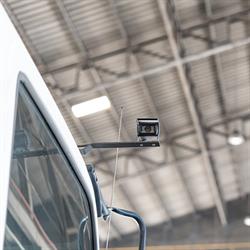Insurance broker McCarron Coates explains why vehicle cameras are playing an increasingly important role in keeping insurance claims down.

At a time when fleet operators are battling with rising costs of fuel, energy and labour, it can be extremely advantageous, from an insurance cost-saving and claims avoidance point of view, for all fleet operations to adopt First Notification of Risk (FNOR) strategies, as well as First Notification of Loss.
This means investing in both outward-facing cameras and driver-facing cameras that combine machine vision with AI capabilities, which can create audible signals, to alert a driver to risks. These can be external or caused by a driver doing something that could prove a distraction. By investing in such cameras, a fleet operator could cut their cost per claim and dramatically reduce claims severity.
In addition, fleet operators need to be progressing their in-cab security systems so cameras and telematics are no longer siloed security systems, but working together, so as to provide an optimised crash narrative. Their evidence bank needs to be thorough and irrefutable, at a time when rises in insurance fraud are making insurers keener to have all the evidence in front of them, before agreeing to any liability.
Cameras are now also imperative because of the legislative framework in which commercial drivers are operating. Making this the 'Year of the Cameras' is vital within a sector that is facing an increasing threat from theft of both vehicles and goods but also from those seeking to benefit from crash for cash scenarios.
Add to this legal issues and goods damage that can arise when there is unauthorised access to a truck’s load areas – a particular issue for those servicing European routes – and cameras can be multi-purpose ...